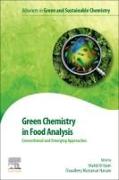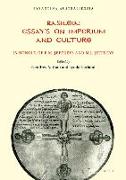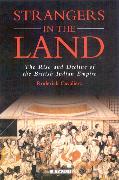- Start
- Green Chemistry in Food Analysis
Green Chemistry in Food Analysis
Angebote / Angebote:
Green Chemistry in Food Analysis provides systematic analysis and up-to-date coverage of green sample preparation techniques in food analysis. Traditional sample preparation techniques within the food industry are not only costly but also time-consuming and generally labour-intensive. Furthermore, these techniques require high solvent content, generating waste, polluting the sample, and enriching the analyte for food analysis. In recent years, Simple, fast, cost-effective, and green (environmentally friendly) techniques are preferred now instead of traditional methodologies. Part one of this book compiles and discusses the advantages and limitations of sample preparation techniques that are relevant to green chemistry whilst also addressing the latest developments in green spectroscopic and chromatographic techniques for food analysis. Throughout the book, a clear overview of the limitations of each existing analytical method is identified and proposed solutions are recommended for the development of new strategies to solve real problems in an accurate, sensitive, precise, fast, and friendly way for both academic and industrial laboratories. In the absence of a good reference book, this will help food chemists, scientists, engineers, and researchers take full advantage of these cutting-edge and environmentally friendly approaches in the food industry. Part two of Green Chemistry in Food Analysis provides systematic and comprehensive coverage of emerging green materials, analytical technologies, and their applications in food analysis. Section 1 discusses emerging green materials introduced in food analysis, including solvents, adsorbents, biopolymers, and sensors. Section 2 reviews key developments in emerging technologies, including chapters devoted to artificial intelligence, microfluidics, and nanotechnology. The final section covers applications of these methods for the detection of allergens, dyes, pathogens, mycotoxins, and other adulterations in food samples. With contributions from leading researchers highlighting the advantages and challenges associated with the use of these materials and technologies, this book is of great interest to academic researchers, industry professionals, policy makers, and postgraduate students working in the fields of food chemistry, analysis, and engineering.
Folgt in ca. 15 Arbeitstagen




